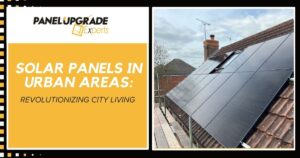Canada is the world’s second-largest nation with a wide range of climates. We Canadians are aware that there are significant climate distinctions from one region to another on any given day. We also know that winters in Canada can be extremely harsh, with daytime temperatures ranging between -5 and -15 degrees Celsius. And it’s not uncommon for temperatures to dip below -40 degrees Celsius!
So, it’s only natural to wonder how you could properly install solar panels on your home in Calgary that work all year. Is it possible to utilize solar energy in our severe Canadian climate? Do chilly temperatures prevent us from taking advantage of solar power throughout the year? You’ve come to the right place if you’re seeking answers to any of these questions. This article will explain how solar panels may still be a viable option for your home during snowy Calgarian winters.
The cold temperatures accompanying Canada’s Northern climate are beneficial for the use of solar panels. If temperatures get too high, the solar panels will overheat and stop producing as much energy. This is comparable to if I asked you to play soccer in scorching weather conditions. You would be exhausted and not perform half as well.
Solar panels can produce more energy in lower temperatures. This is because heat is considered a resistance in a circuit, and when the heat is removed, the resistance is lowered, allowing for more energy to be produced. In essence, when the heat is lowered, the output can be increased, making Canada’s low temperatures an attractive place to install solar panels.
Is it possible to use solar panels in snowy conditions?
Solar panels function even in heavy snowfall. If they are entirely covered in snow, however, their performance will be hampered. That’s why expert solar installers position the panels at an angle to assist snow in sliding off them and your roof. With sufficient sunshine, the snow will quickly melt off the solar panels. If your roof still has snow on it, you may remove it with specially designed solar panel snow rakes.
When you consider all of this, the low impact of snowfall on solar energy generation in Canada is no longer surprising. According to 5-year research conducted by the Northern Alberta Institute of Technology’s (NAIT) Alternative Energy Technology program, the effect of snowfall causes as little as a 3% reduction in solar energy.
How Do Solar Panels Work During a Canadian Winter?
Solar panels will actually improve their performance in snowy weather. The snow will reflect the sunshine and then direct it to the solar panels, assisting in generating more power. But what if the snow does accumulate? Will its weight harm the solar panels?
Solar panels have a specific load capacity stated by the manufacturer. Frame and glass thickness are two important aspects that determine the overall solar module price. A thicker frame with thicker glass would allow for more loading, increasing the cost of aluminium or glass. The amount of pressure a panel can endure is measured in pounds per square foot (PSF) or Pascals (Pa) (which equals 0.02 PSF). Solar panels are typically designed to handle loads of up to 5,400Pa or 108 pounds per square foot.
Solar panels can survive Canadian winters, and they may even benefit from it if properly maintained. When it comes to solar energy, we should be more aware of its peculiarities, advantages, and associated costs. Solar panels are unquestionably one of the most useful renewable energy sources available to Canadians, and they contribute significantly to the country’s net-zero strategy.


